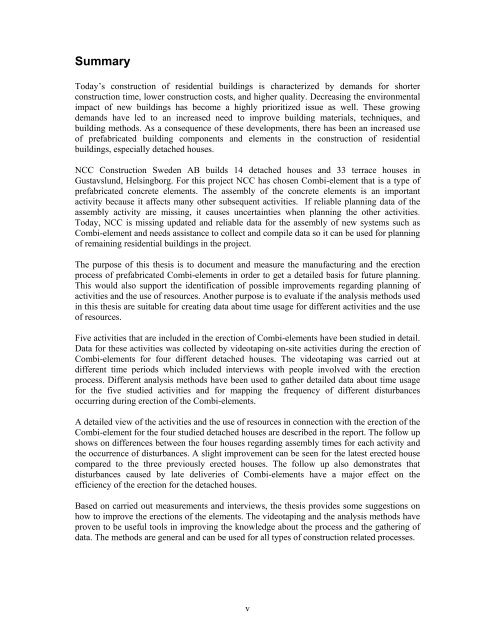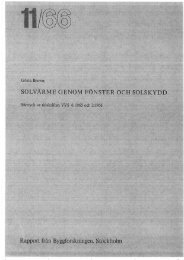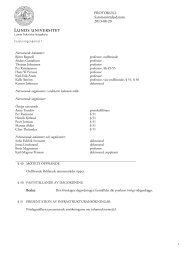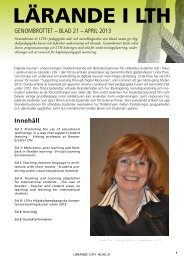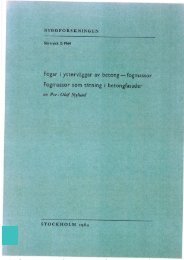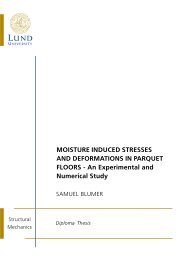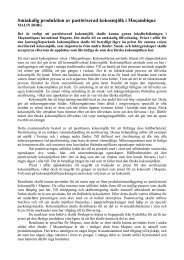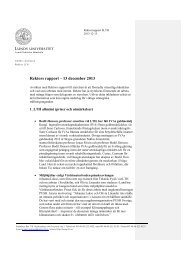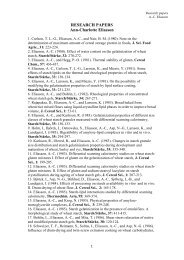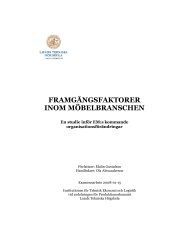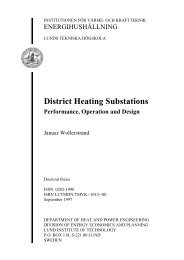Prefabricerade väggelement - Lunds Tekniska Högskola
Prefabricerade väggelement - Lunds Tekniska Högskola
Prefabricerade väggelement - Lunds Tekniska Högskola
Create successful ePaper yourself
Turn your PDF publications into a flip-book with our unique Google optimized e-Paper software.
Summary<br />
Today’s construction of residential buildings is characterized by demands for shorter<br />
construction time, lower construction costs, and higher quality. Decreasing the environmental<br />
impact of new buildings has become a highly prioritized issue as well. These growing<br />
demands have led to an increased need to improve building materials, techniques, and<br />
building methods. As a consequence of these developments, there has been an increased use<br />
of prefabricated building components and elements in the construction of residential<br />
buildings, especially detached houses.<br />
NCC Construction Sweden AB builds 14 detached houses and 33 terrace houses in<br />
Gustavslund, Helsingborg. For this project NCC has chosen Combi-element that is a type of<br />
prefabricated concrete elements. The assembly of the concrete elements is an important<br />
activity because it affects many other subsequent activities. If reliable planning data of the<br />
assembly activity are missing, it causes uncertainties when planning the other activities.<br />
Today, NCC is missing updated and reliable data for the assembly of new systems such as<br />
Combi-element and needs assistance to collect and compile data so it can be used for planning<br />
of remaining residential buildings in the project.<br />
The purpose of this thesis is to document and measure the manufacturing and the erection<br />
process of prefabricated Combi-elements in order to get a detailed basis for future planning.<br />
This would also support the identification of possible improvements regarding planning of<br />
activities and the use of resources. Another purpose is to evaluate if the analysis methods used<br />
in this thesis are suitable for creating data about time usage for different activities and the use<br />
of resources.<br />
Five activities that are included in the erection of Combi-elements have been studied in detail.<br />
Data for these activities was collected by videotaping on-site activities during the erection of<br />
Combi-elements for four different detached houses. The videotaping was carried out at<br />
different time periods which included interviews with people involved with the erection<br />
process. Different analysis methods have been used to gather detailed data about time usage<br />
for the five studied activities and for mapping the frequency of different disturbances<br />
occurring during erection of the Combi-elements.<br />
A detailed view of the activities and the use of resources in connection with the erection of the<br />
Combi-element for the four studied detached houses are described in the report. The follow up<br />
shows on differences between the four houses regarding assembly times for each activity and<br />
the occurrence of disturbances. A slight improvement can be seen for the latest erected house<br />
compared to the three previously erected houses. The follow up also demonstrates that<br />
disturbances caused by late deliveries of Combi-elements have a major effect on the<br />
efficiency of the erection for the detached houses.<br />
Based on carried out measurements and interviews, the thesis provides some suggestions on<br />
how to improve the erections of the elements. The videotaping and the analysis methods have<br />
proven to be useful tools in improving the knowledge about the process and the gathering of<br />
data. The methods are general and can be used for all types of construction related processes.<br />
v


